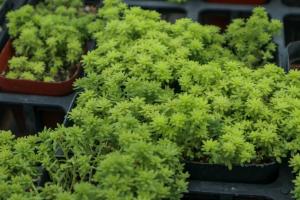Where Does Most of the Water Absorption of Plants Occur
Water is an essential element for plant growth and development. It is responsible for various functions such as photosynthesis, transportation of nutrients, and maintenance of cell turgor. The root system of plants is the main system responsible for water uptake from the soil. However, not all parts of the root system are involved in water uptake, and there is a distinct area that is specialized for water absorption.
The Root System of Plants
The root system of plants includes a primary root and numerous secondary roots. The primary root emerges from the seed and is responsible for anchoring the plant in the soil. The secondary roots emerge from the primary root and are responsible for water absorption and nutrient uptake. The root system is an extensive network of roots that can grow up to two or three times the size of the above-ground plant.
The Zone of Maturation
The zone of maturation is the region of the root system that is responsible for water absorption. This zone is located near the tips of the secondary roots, where the root hairs are present. The root hairs are small and thin, outgrowths of the epidermal cells of the roots. They greatly increase the surface area of the root system and facilitate water absorption. The root hairs are constantly renewed, and old ones are shed as new ones form.
The Process of Water Absorption
Water absorption by the roots is a passive process that is driven by a concentration gradient. Water moves from an area of high concentration, which is the soil, to an area of low concentration, which is the root. Inside the root, water moves from the maturation zone to the xylem tubes. The xylem tubes are responsible for transporting water to the rest of the plant.
The process of water absorption is facilitated by various factors such as soil water content, concentration of solutes, and root morphology. The soil water content determines the availability of water for absorption. The concentration of solutes affects the water potential of the soil and the plant, which in turn affects water movement. Root morphology, including the length and density of the root hairs, also affects the rate of water absorption.
The Role of Transpiration
Transpiration is the loss of water vapor from the leaves of the plant. It creates a negative pressure in the xylem tubes, which can cause water to move from the roots to the leaves. Transpiration is vital for the transport of water and nutrients throughout the plant. However, excessive transpiration can lead to water stress and damage to the plant.
Conclusion
The zone of maturation, located near the tips of the secondary roots, is the primary region responsible for water absorption in plants. The process of water absorption is passive and driven by a concentration gradient. Root morphology, soil water content, and concentration of solutes are factors that affect water absorption. Transpiration plays a vital role in the transport of water and nutrients throughout the plant but can also cause water stress in plants.

 how many times do yo...
how many times do yo... how many planted tre...
how many planted tre... how many pine trees ...
how many pine trees ... how many pecan trees...
how many pecan trees... how many plants comp...
how many plants comp... how many plants can ...
how many plants can ... how many plants and ...
how many plants and ... how many pepper plan...
how many pepper plan...































